Art Collectors
Canadian Collector Bruce Bailey Brings a Poignant Message to the Venice Biennale
He’s exhibiting a selection of anti-war works from his collection, accompanied with an original poem by Margaret Atwood.
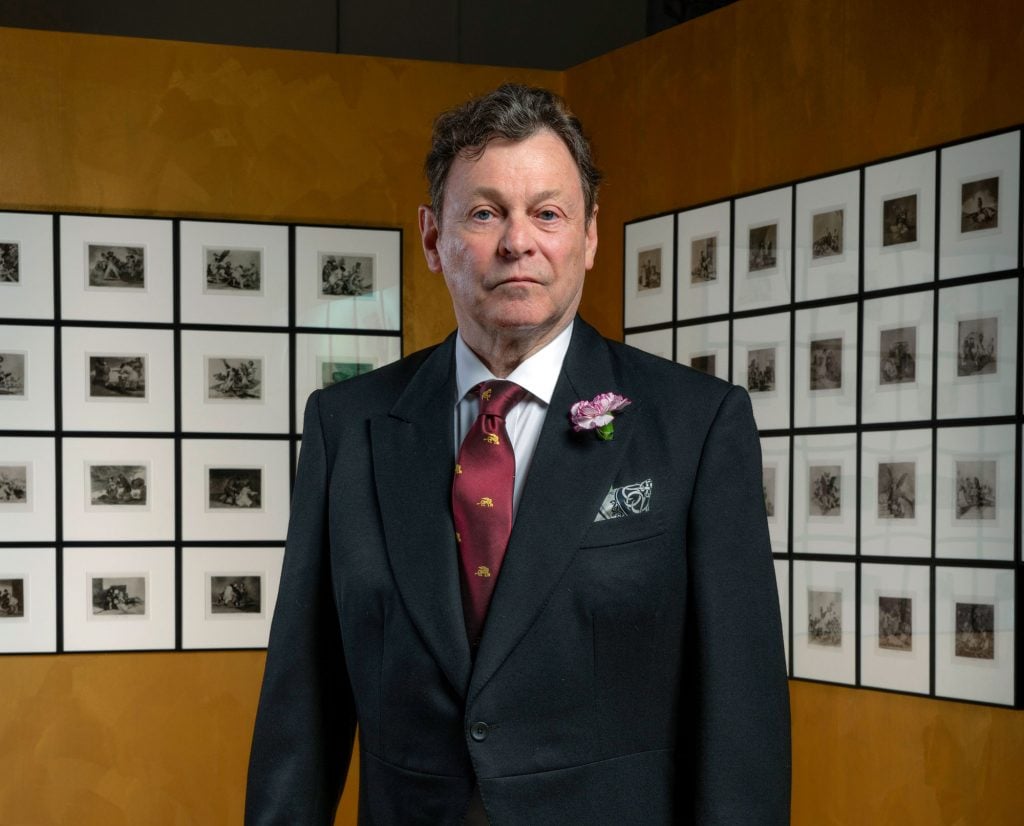
He’s exhibiting a selection of anti-war works from his collection, accompanied with an original poem by Margaret Atwood.

Lee Carter

Ever dapper and slightly droll, Bruce Bailey could chat endlessly about the Canadian art scene and the decades he’s spent championing it, espousing it, and nurturing it. The Toronto-based investment banker, longtime collector, and self-styled salonnier is lauded for his passionate, energetic advocacy of the arts—most recently with his fêtes champêtres, the annual galas he holds on his country estate to benefit Canadian artists and institutions.
Bailey could riff on all of the above, and does so happily, but with the 60th Venice Biennale about to kick off, he’s keen to discuss a more pressing project: Alongside the Biennale, he’s exhibiting a selection of historical and contemporary anti-war art from his personal trove. “My overall collection is based on the human condition—birth and death, love and hate, pain and happiness,” he explained. “But with all the conflict that’s going on in the world, for this Venice project I wanted to focus on depictions of war, especially those of the anti-heroic sort.” By which he means stripped of the glory and regalia traditionally associated with battlefield scenes.
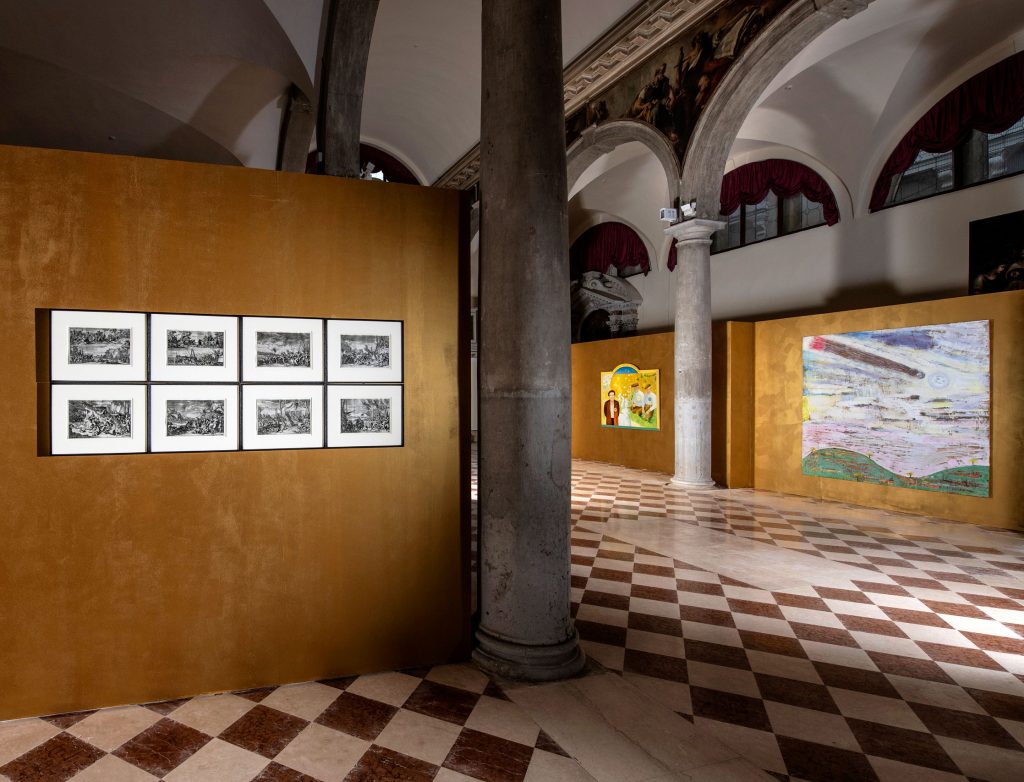
Installation view of “Beati Pacifici: The Disasters of War and the Hope for International Peace” from the Bailey Collection. Photo: Gianmaria Deluca. Courtesy of the Bailey Collection.
The centerpiece of the show is Bailey’s first edition of Francisco Goya’s The Disasters of War (1810–1820), the seminal 83-print series documenting the horrors that followed Napoleon’s occupation of Spain. Bailey has envisioned a dialogue between that definitive work and other visual critiques of war, also drawn from the Bailey Collection, including Jacques Callot’s Miseries of War etchings of 1633 (which influenced Goya, who owned a set) and Der Krieg by Otto Dix, which depicts the abject barbarity of the First World War from the artist’s frontline view as a German soldier.
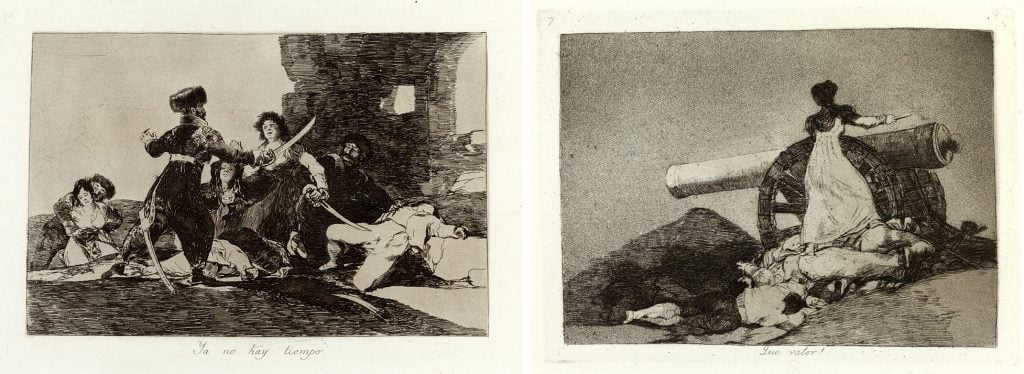
Etchings 19 and 7 from the first edition of Francisco Goya’s The Disasters of War (1810–1820), printed in 1863. Courtesy of the Bailey Collection.
Contemporary pieces in the exhibition, titled “Beati Pacifici,” include Jake and Dinos Chapman’s Disasters of War II (1999), in which the YBA artists painted over an actual set of original Goya prints made in 1934, and Marlene Dumas’s The Fog of War (2006). In addition, Bailey has provided more “hopeful expressions” by artists Paterson Ewen, Jack Chambers, and Peter Doig, whom he befriended early in the artist’s career while still based in Canada. All of it is tied together with a new and original poem on the senseless inhumanity of war by celebrated writer Margaret Atwood, another personage from among Bailey’s social swirl in Toronto.
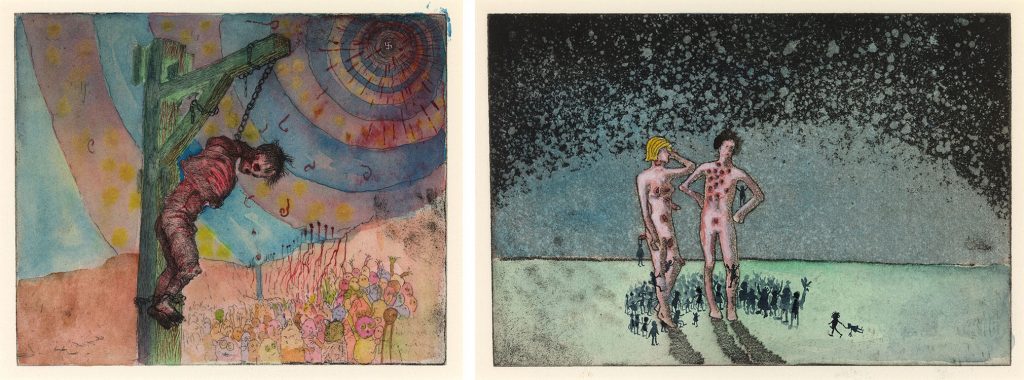
Etchings 71 and 2 from Jake and Dinos Chapman’s Disasters of War II (1999). © Jake and Dinos Chapman. Courtesy the artists and the Bailey Collection.
Ultimately, said Bailey, his curation of the show—which he’s staging in an 11th-century church facing the Grand Canal, Chiesa di San Samuele, from April 16 to September 29, 2024—is intended to hark back “to the Biennale’s original goal of cultural diplomacy.” He posited that “sixty years ago, you could gaze at a Picasso and say civilization is worth saving, so let’s get a nuke treaty.”
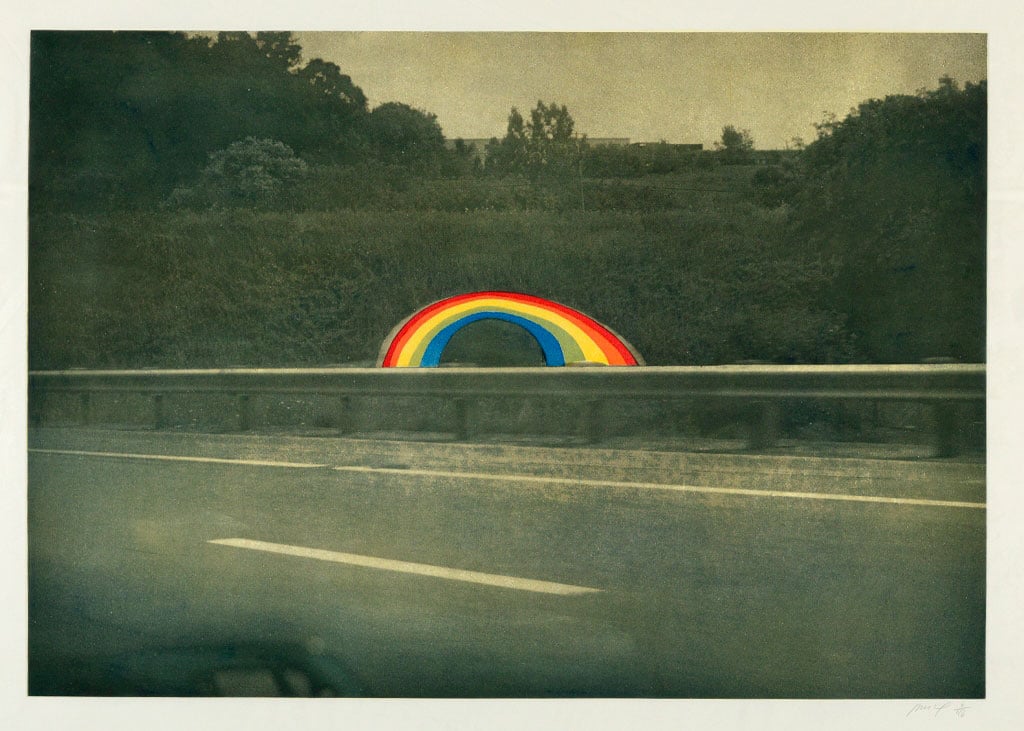
Peter Doig, Country Rock (2000), © Peter Doig. Courtesy of the Bailey Collection.
A kind of cultural ambassador, it’s fitting that Bailey honed his role at his famed fêtes champêtres (literally “parties in the fields”) at his pastoral estate just outside Toronto. Live auctions dressed up as costume parties, they’re attended by a wide swath of artists and their moneyed patrons, all rubbing elbows and raising funds in support of Canadian institutions, chiefly the Montreal Museum of Fine Arts (MMFA). “My fêtes champêtres are unique in that they bring those with artistic capital together with rich people, whose sponsorship of the event is mandatory,” he said. “I seat everybody together; you could have a farmer, a billionaire, and a cellist at the same table. The purpose is to raise money and make connections that continue to resonate long after the party.”
Bailey’s 2022 fête champêtre paid tribute to Peter Doig, who donated a painting, Study for Iron Hill, valued at $4.1 million to the MMFA. Earlier, in 2018, using funds raised by the first fête, the museum acquired an important work by Shilpa Gupta and further credits the Fête-Champêtre Fund with the purchase of Firelei Báez’s Untitled (Terra Nova) of 2020. That same year, the museum staged a show of more than 100 items from the Bailey Collection, most notably by Marina Abramović, Kerry James Marshall, and Beau Dick, a Kwakwaka’wakw mask-maker and activist who practiced in British Columbia.
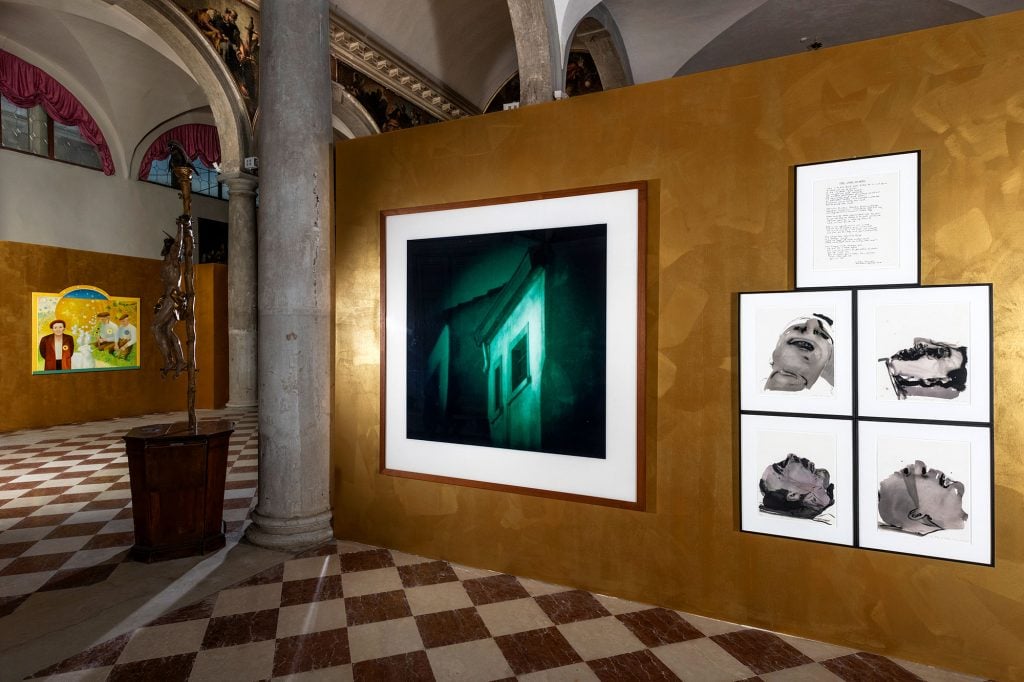
Installation view of “Beati Pacifici: The Disasters of War and the Hope for International Peace” from the Bailey Collection. Photo: Gianmaria Deluca. Courtesy of the Bailey Collection.
Bailey intends to bring his knack for diplomacy to his Venice exhibition, too. “There’s a method to my madness. At the opening, I’m planning five sets of entertainment over five nights. To start, a friend of mine, Amber Braid, a soprano singer and the star of the Frankfurt Opera, is flying in to sing arias of war and peace, conducted by the music director for the Canadian Opera Company, Johannes Debus. Plus, I’ve invited 30 philanthropists and foundations in Canada to be part of my Venice delegation,” he continued. “I’m curious to see how they mix and mingle with the directors and curators of the Venice establishment, who are all invited—the Querini Stampalia, Cini Foundation, Gallerie dell’Accademia, Palazzo Fortuny, Biblioteca Marciana, the Peggy Guggenheim Collection. I’m using a shared love of art to bring people together.”
“Beati Pacifici: The Disasters of War and the Hope for International Peace” is curated by W. Bruce C. Bailey from the Bailey Collection and runs at Chiesa San Samuele, Venice, from April 16 to September 29, 2024.